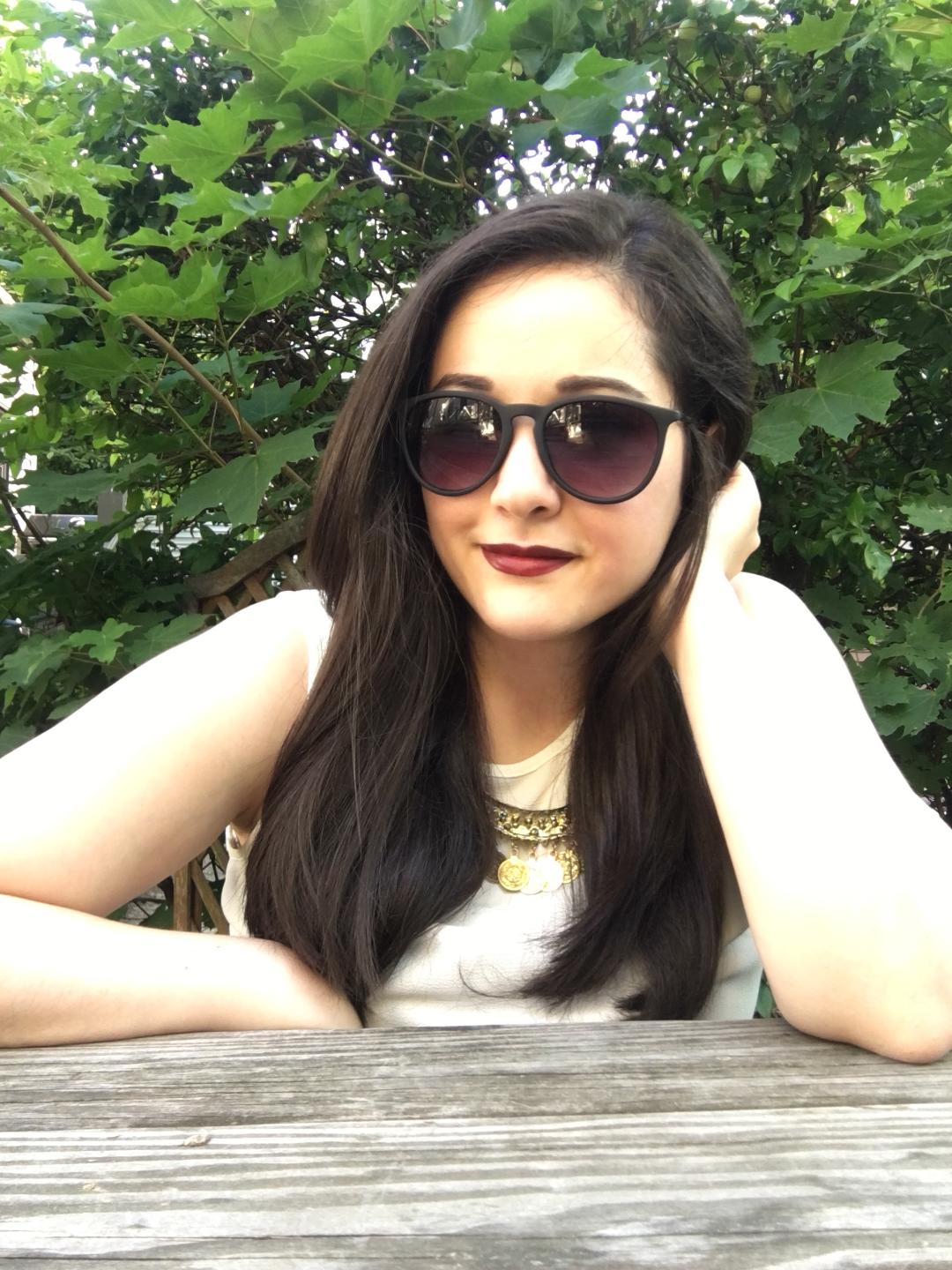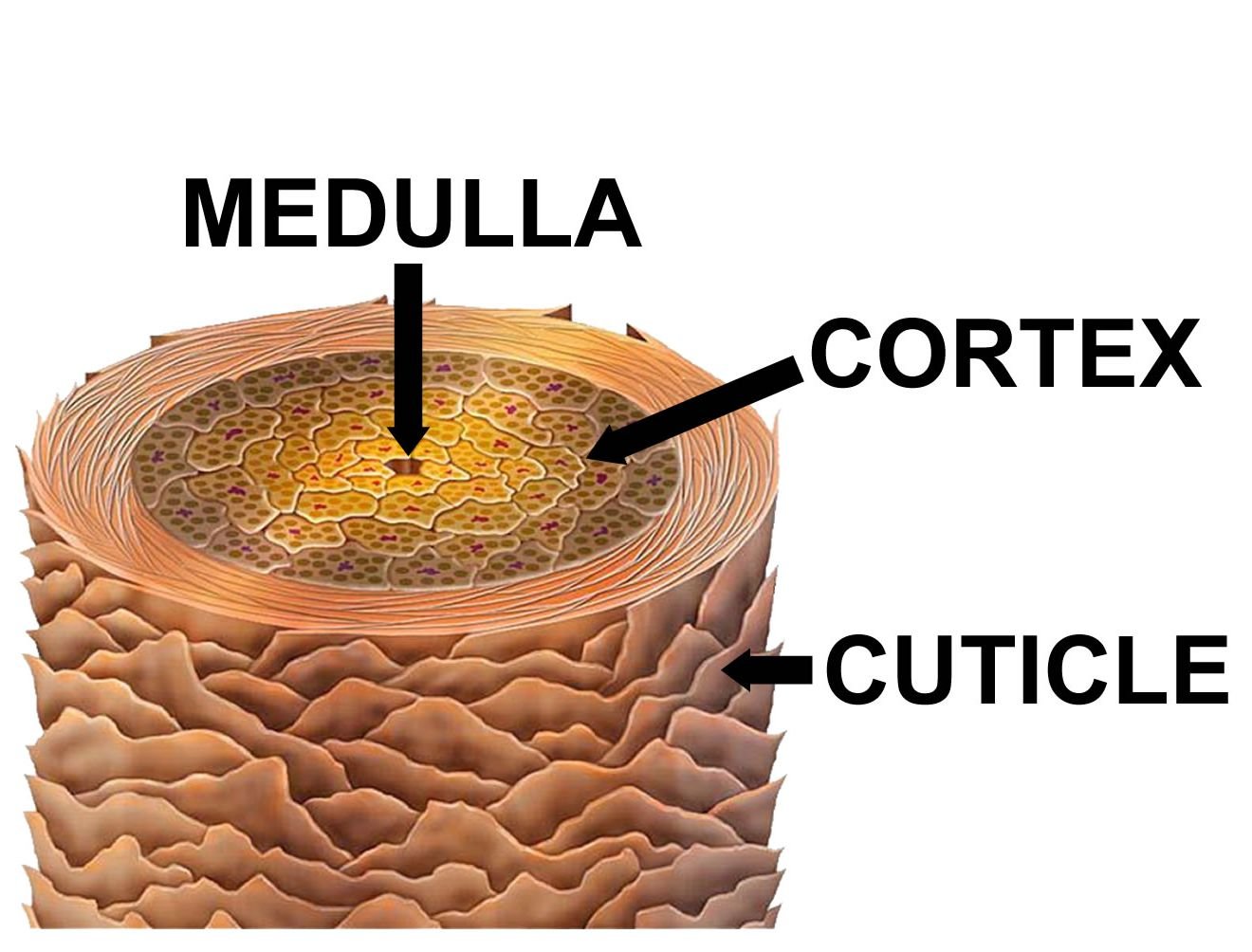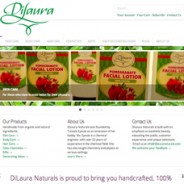Healthy hair has been regarded as a sign of good health and youthfulness for centuries. But many of us struggle to achieve it. As the global hair care market reached 87 billion US dollars in 2018, how can we tell which products are better and more effective? Let’s delve in and learn how can we achieve healthy hair the natural way.

Hair is a biomaterial, consisting of a protein called keratin. Our hair consists of 4 parts:
- The medulla is a loosely packed, disordered region near the center, surrounded by the cortex.
- The cortex, which holds the major part of the fiber mass, consists of keratin proteins and structural lipids.
- The cortex is surrounded by the cuticle, a layer of dead, overlapping cells forming a protective layer around the hair.

Scalp care is essential because it develops a healthy hair routine, determines its condition, and prevents diseases of scalp and hair. Many modern-day hair styling methods and products cause hair damage by harming the cuticle through abrasion, resulting in hair loss. For example, Brazilian keratin treatments are popular for straightening hair, targeting those who want to manage their frizzy or unruly hair. However, their safety and long-term side effects have not been thoroughly assessed. In fact, many of the products used in Brazilian keratin treatments contain unsafe ingredients, such as formaldehyde, which can cause structural changes to the hair shaft.
Results have also shown that the heat from hair straighteners, curling irons, and chemical dyes can damage your healthy hair, causing chemical burns, dermatitis, alopecia, and breakage. Furthermore, the use of hair dyeing products has also been associated with cancer and other systemic diseases. Additionally, some scientific studies have observed adverse reactions to dyes, such as headaches, itching, and hair loss.
Dry Hair
Dry hair lacks moisture.
One of the biggest obstacles to having healthy hair is dryness. As you age, it is normal for your hair to produce less oil. Because dry hair is a sign of hair damage, treating it is important. As dry hair lacks adequate moisture, it gives your hair a dull and a frizzy appearance. Moreover, a dry scalp can result in dandruff, causing your scalp to peel and shed.
Dry hair can be the result of environmental, personal, or physical factors. One major cause of dry hair is the scalp not making enough oil to keep your healthy hair moisturized. So, the hair has no natural lubrication. Another reason might be that the hair is unable to keep moisture due to damaged protective cuticle layers.
Some factors that may be responsible include:
- Over-washing
- Frequent blow drying
- Applying harsh hair products, such as shampoos or gels
- Using heated hair tools, such as straighteners or curling irons
- Over-exposure to sun, wind, dry air, or chlorinated water
- Applying chemical treatments, such as hair dyes, or perms
Fortunately, there are a few easy solutions to treat dry hair.
- Air dry instead of blow drying.
- Avoid straighteners, curling irons, and electric rollers.
- Wash your hair less often, so as to not strip away your hair’s natural oils.
- Avoid harsh hair treatments, such as dyeing or perming.
- Use natural hair products without alcohol to protect and moisturize your hair cuticles.
- Follow shampooing with a moisturizing conditioner.
- Add natural oils, such as jojoba oil or coconut oil, into your hair-care routine.
- Protect your hair from harsh weather elements with hats, scarves, and other coverings.
- Apply a natural deep mask once a week to restore oils back to your hair.
Oily Hair
Oily hair produces an excess of sebum.
The pores on your scalp have sebaceous glands that secrete an oily substance called sebum, which gives hair its natural shine and luster. However, some sebaceous glands produce an excess of sebum, resulting in oily and greasy hair.
Some advice for dealing with oily hair is:
- Refrain from touching your hair so there is no buildup of extra oil from your fingers or face.
- Reduce use of straighteners and flat irons, since sebum travels down easier on straight hair than curly or wavy hair.
- Avoid over-washing as it leads to stripping your scalp of vital oils.
- Use conditioner sparingly, and only on the ends.
- Avoid heavy styling products like gels and mousses, which will weigh down your healthy hair and cause more buildup.
Hair Loss
Another common problem is hair loss.
Hair loss is a condition that can have natural, medical, and even nutritional causes. Peppermint oil has been proven to have many beneficial effects, due to the fact that a major component of peppermint oil is menthol. Scientific studies have shown that using peppermint oil not only stimulates healthy hair growth, but also helps prevent hair loss. Coconut oil also has a protective effect on damaged hair, thanks to its deep penetrating ability.
Here are some tips to achieve healthy hair.
- Treat your hair gently – don’t pull, twist, scrub, or wring your hair too roughly.
- Use lukewarm water to shampoo and cold water to rinse out the conditioner.
- For best results, let your hair air dry instead of blow drying.
- Comb your hair with a wide-toothed comb instead of brushing it, as it can cause breakage.
- When brushing, use a boar bristle brush, which pulls your hair’s oils from the roots to the tips.
- Avoid tight hairstyles that pull on your healthy hair.
- Apply a leave-in conditioner or a hair mask once a week.
- Try a scalp massage, which will stimulate circulation of your roots.
- Use hair products with natural ingredients, avoiding products with harmful sulfates, silicones, and alcohol.
- Add nutritious foods with protein, omega-3 fatty acids, and iron to your diet.
- Trim your hair every few months to get rid of any dry or split ends.
Hair loss can also occur due to a thyroid disorder, causing your hormones to be out of balance. Additionally, regular use of fragrances, air fresheners, or body sprays can trigger an unbalance of thyroid hormones.
This article is written to provide information on how to get healthy hair, not to diagnose, treat, cure, or prevent any disease.





